The rebar production process includes several key steps that will affect the quality, properties, and final price of the product. Given the wide application of rebar in various industries, familiarity with the production process and the factors affecting it can help improve efficiency, reduce costs, and increase customer satisfaction. Similarly, the rebar production process is one of the important issues that greatly affects the quality of the product supplied and will also cause variation in the price of rebar. The most important application of rebar can be considered to be compensating for the tensile strength in reinforced concrete. In this article, we intend to examine the rebar production process.
Raw materials required for rebar production
Rebar is one of the important materials in construction that is produced from steel. Steel is an alloy of iron and carbon that can be combined with other elements such as manganese, chromium, nickel, molybdenum, etc. to have the desired properties.
To produce rebar, first a steel ingot is produced in a cubic or rectangular shape in melting furnaces. Steel ingots can be made of carbon steel, alloy steel, stainless steel, tool steel, and electrical steel. Each type of steel ingot has its own chemical composition and mechanical properties.
For example, alloy steel has higher strength, greater hardness, better weldability, and resistance to corrosion and wear. After the steel ingot is produced, it is heated in preheating furnaces and then sent to rolling machines. In the rolling machines, the steel ingot is pressed and transformed into a rebar of the desired diameter.
It should be noted that the rebar can be plain or ribbed. Ribbed rebar has pastes on its surface that increase the adhesion between the rebar and the concrete. The produced rebar complies with valid standards such as ASTM A615, BS 4449, IS 1786, etc. This product is cut into different lengths and is provided with a technical specification card.
What is the rebar production process?
In order to produce rebar, first the ingots are guided to the furnace by hydraulic jacks and the heating process continues until the ingots reach a temperature of 1100 degrees Celsius. In the next stage, the rolling process will begin and the heated ingots are moved to the production line for roughing.
In the rebar production process, the roughing stage is a stage where fundamental changes are made to the ingot to become rebar. In order to increase the length and reduce the diameter of the ingots, they are passed through the existing rolling racks. At this stage of rebar production, 10 to 18 rollers are available for rolling. Next, the rebar is reamed and finally, length shears are used to cut the rebar into certain lengths. The rebars are mostly cut to 12 meters in length and packaged and finally placed in 2-ton bundles.

Rebar Production Stages
Therefore, in a general view, in order to produce rebar, preheating furnaces are used to bake the ingots, furnace rolls are used to move the ingots to the roughing stage, roughing is used to increase the length and reduce the dimensions of the ingots in order to send the ingots to the rolling stage, and punching shears, stands, measuring shears, and packaging combs are used to prepare the rebars for sorting and cooling.
Regarding the rebar production process, note that in factories, tests are performed on the produced rebars to check them and to adapt them to predetermined rules and standards.
Rebar Production Stages
Given the wide range of types of rebar in the industry, each has its own mechanical and physical properties, as well as a different appearance and its own technical specifications (standards) for production. Here, we will mention each of them.
Hot rolling: This method is the most widely used and traditional method of producing rebar. In this method, molten steel is first converted into rectangular ingots. Then, the ingots are heated at high temperature and converted into rods of smaller diameter and greater length through multiple moving rollers. Finally, the rebar is shaped and cut using rollers that create the desired grooves on the surface of the rods. The rebar produced by this method usually has average mechanical properties and low price.
Cold rolling: This method is a more modern method of producing rebar that is used to increase the mechanical properties of the rebar. In this method, the hot rolled rebar is first pulled at room temperature (cold) through rollers that apply high pressure to it. This results in a smaller diameter, longer length, higher strength, and lower elasticity. Rebar produced by this method usually has high mechanical properties and a moderate price.
Termex method: An advanced method for producing rebar that is used to increase mechanical properties and reduce the cost of the rebar. In this method, hot-rolled rebar is first cooled rapidly at high temperatures. Then the rebar is heated at moderate temperatures and cooled again. This process results in the rebar having a suitable microscopic structure, high strength, and elasticity with low corrosion. Rebar produced by this method often has very high mechanical properties and a low price.
Alloying method: This method is a new method for producing rebar that is used to increase mechanical properties and corrosion resistance. In this method, alloying elements such as manganese, chromium, nickel, molybdenum, etc. are first added to molten steel. Then the alloy steel is converted into ingots and converted into final rebar through hot or cold rolling. Rebar produced by this method usually has very high mechanical and chemical properties and is expensive.
Modern roughing method: This method is one of the methods of the hot rolling group in which steel ingots are heated at high temperatures and converted into bars with a smaller diameter and greater length through multiple rollers. This causes the structure of the ingots to be disrupted and the yield strength and ductility of the rebar to increase.
Finally, the rebar is shaped and cut using rollers that create the desired grooves on the surface of the bars. Using this method of rebar production has advantages such as reducing production costs, increasing product quality, reducing waste, and the possibility of producing high-strength rebars.
At the same time, however, it will entail limitations such as the need for preheating furnaces, problems with rolling at high temperatures, and increased corrosion of rebar.

New methods of rebar production
Like other building materials, rebar production is undergoing ideological and technological changes to achieve better properties and lower production costs. Therefore, many factories are currently using new methods to produce rebar and other products, which we will mention here:
Continuous rolling
This method is one of the most widely used methods of rebar production, in which steel ingots are passed through a series of rollers at high temperature and transformed into long, thin rods. This method ensures that the rebar has suitable and homogeneous mechanical properties and also reduces energy consumption and production costs.
Hydraulic rolling
This method is one of the new methods of rebar production in which water pressure is used to deform the steel ingots. This method has advantages such as reducing rolling temperature, increasing production speed, reducing roller wear and improving the quality of the rebar.
Use of protective coatings
This method involves creating a thin layer of various materials on the surface of the rebar, which can prevent corrosion, abrasion, oxidation and contamination of the rebar. Types of protective coatings can include paint, resin, plastic, galvanized, aluminum, etc.
Rebar Production: Production Process Advanced Applications and Technologies
Rebar production is one of the most important construction and industrial materials and is used in many industries including construction, automotive, transportation, marine industry, energy, etc. The rebar production process includes several key steps, which are briefly explained below:
Raw material production process: Rebar production begins with the use of raw materials such as sponge iron or iron paste extracted from mineral deposits.
Melting: In this stage, raw materials are placed in melting furnaces and melted using high thermal energy and converted into a molten state.
Purification and preparation of molten iron: After melting, molten iron is purified from salts and contaminants and prepared for the rebar production process.
Casting: At this stage, molten iron is poured into casting machines and prepared in special molds in the form of rebar.
Deforming and smoothing: After casting, the rebars are subjected to deformation and smoothing by forging, smoothing and forging.
Quality control: At each stage of the rebar production process, quality control is carried out to ensure the quality of the final products.

Advanced Technologies in Rebar Production: Improving Performance and Reducing Costs
Advanced technologies in rebar production can improve performance and reduce costs. Some of these technologies include:
Electric Furnace Process: In this process, coke ovens are replaced with electric furnaces to melt raw materials. This process is generally more efficient, faster, and less expensive than traditional furnaces, and reduces costs and improves performance in rebar production.
Advanced Technologies in Casting: The use of advanced technologies in casting machines can increase the accuracy and speed of casting and reduce costs.
Smart Control: Automation and smart control in rebar production processes can increase accuracy and efficiency and reduce costs. Real-time monitoring and control through smart and functional systems can help improve rebar production performance.
Energy efficiency: Using energy efficiency technologies, such as heat recovery, renewable energy, and pollution reduction, can help reduce costs and improve performance in rebar production.
Using new quality control technologies
This method involves using new measurement and testing methods to evaluate the physical and chemical properties of rebar. These methods can include sensors, cameras, radars, lasers, ultrasonics, etc.
Using electric furnaces in rebar production
This includes using electric furnaces to melt steel and produce steel ingots. This method has advantages such as increasing energy efficiency, reducing production costs, and the ability to produce a variety of steel sections, including industrial rebar or simple Ck45 rebar. Other advantages of using this important method include:
Reducing environmental pollution, because electric furnaces use electrical energy and reduce the production of smoke and greenhouse gases.
Increasing energy efficiency, because electric furnaces are highly efficient and reduce energy consumption and production costs.
The possibility of producing a variety of steel sections with the desired properties, because electric furnaces allow for precise control of temperature, chemical composition, and homogenization of the melt.
The possibility of using scrap and waste steel as a raw material, because electric furnaces are capable of melting a variety of metals and ironware.
The impact of rebar production on the economy and industry: challenges and opportunities
As one of the most important raw materials in the construction, automotive, industrial equipment, and infrastructure industries, rebar production has a significant impact on the economy and industry. The following are some of the challenges and opportunities for rebar production in the economy and industry:
Challenges:
Market Fluctuations: The rebar industry is highly affected by fluctuations in the global market for raw material prices and demand for construction and automotive products. Fluctuations in prices and demand can negatively impact the profitability and sustainability of the rebar industry.
Global Competition: The rebar industry faces intense competition from other manufacturers around the world, including countries with lower production costs. This competition can lead to lower prices and profitability for local manufacturers.
Natural Resource Constraints: Rebar production requires raw materials used in the production process, such as iron and smelters. Constraints in access to natural resources and raw materials may lead to challenges in rebar production, including increased prices and reduced supply.
Opportunities:
Market Growth: Despite the challenges in the rebar industry, the demand markets for rebar in the construction and automotive industries continue to grow. Increasing urban development and the need for infrastructure and industrial equipment create opportunities for rebar production. By using advanced technologies and taking advantage of improved performance and reduced costs, rebar production can gain new markets and contribute to economic growth and job creation.
Technological Improvement: Advanced technologies such as electric melting, advanced quality control processes, automation and optimization of production processes can improve the performance and efficiency of rebar production. This can reduce production costs and increase the competitiveness of rebar manufacturers.
Export Development: Increasing rebar production and the use of advanced technologies can help develop exports of this product. Providing quality rebar at competitive prices to foreign markets can provide new opportunities for the prosperity of the industry and economy of rebar producing countries.
Comparison of rebar production methods in Iran with other countries
Given that Iran is one of the major producers of rebar in the world, the methods of rebar production in Iran are very diverse and advanced. According to published statistics, Iran produced more than 25 million tons of rebar in 1400 and exported more than 7 million tons of it.
Among the rebar production methods, microalloying and Termex methods are most widely used in Iran. These methods ensure that the rebars produced in Iran have high quality and resistance and are also suitable for the Iranian climate and market. In addition, these methods can help increase rebar exports from Iran and provide new markets for Iran.
Microalloying method: This method is carried out in Iran by factories such as Mobarakeh Steel, Khuzestan Steel, and Iran Alloy Steel.
Termex method: This method is carried out in Iran by factories such as Arfa Steel, Isfahan Steel, and Azerbaijan Steel.
To compare the rebar production method in Iran with other countries, the following can be mentioned:
The Termex method is one of the modern and advanced methods of rebar production that is used more than other methods in European, American and Asian countries such as Germany, Italy, France, America, Japan, India and China. These countries often pay attention to the cost-effectiveness and speed of this method, and for this reason, the Termex method is often used to produce rebar in European countries.
The microalloying method is used more than other methods in Middle Eastern, African and Asian countries such as Iran, Turkey, Saudi Arabia, Egypt and Pakistan. These countries often pay attention to the quality and standardization of this method, and for this reason, the microalloying method is often used to produce rebar in Middle Eastern countries.
In other countries, rebar production methods vary depending on different needs and conditions. Some countries such as China, India and Turkey use the hot rolling method to produce rebar. These countries often focus on producing rebar at a lower cost and in larger quantities, and for this reason they use the hot rolling method to produce rebar.
The unit of measurement for rebars is the same
Rebars, as the most widely used steel sections in the world, are the most popular, and buyers are looking for brands that offer this product with better quality and lower prices. Since each method of producing rebar gives a certain characteristic and amount to the physical and mechanical properties of this section, but at the same time, all methods can determine the minimum requirements.
In Iran, new and significant methods are used to produce rebar, one of which is the electric arc furnace, but at the same time, other traditional methods can also be used that will bring specific technical specifications to the rebar.
Final Words
Rebars produced in factories cannot usually be used in the same form due to their initial length, so it can be said that one of the tasks of the rebar manufacturer is to cut the produced rebar to sizes that are suitable for the structural designer. In addition to the above, the rebar bending process is also carried out in factories, which usually perform bending in three categories: light, heavy, and special.


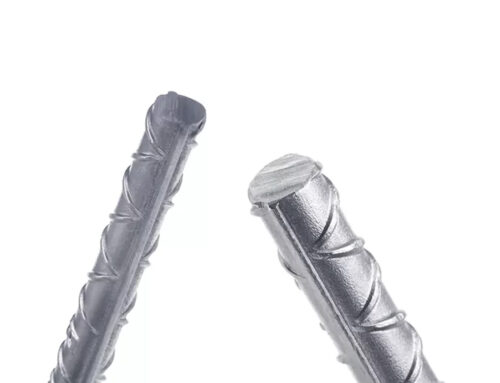

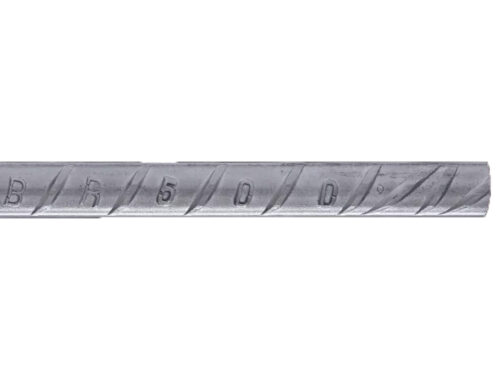
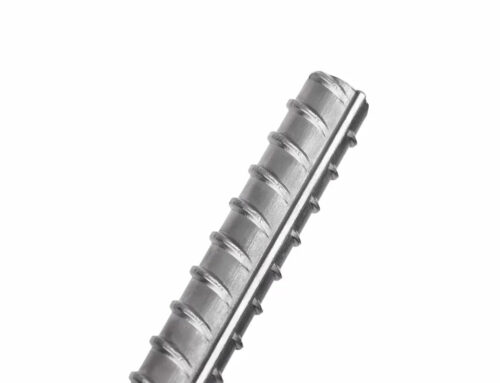
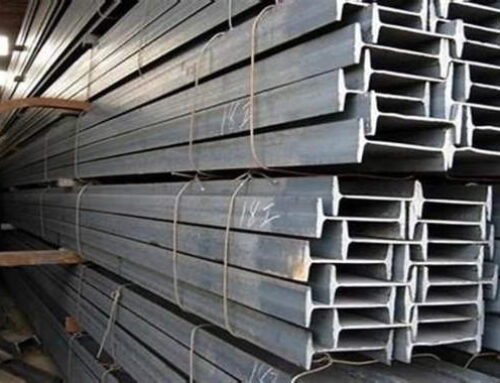
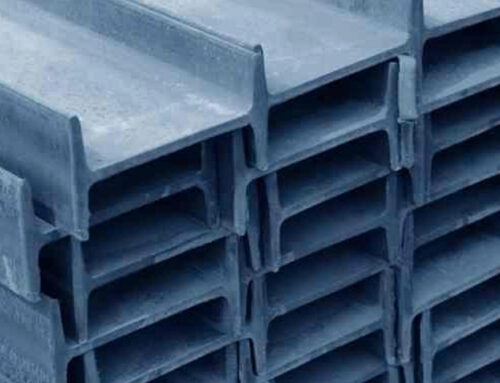
Leave A Comment